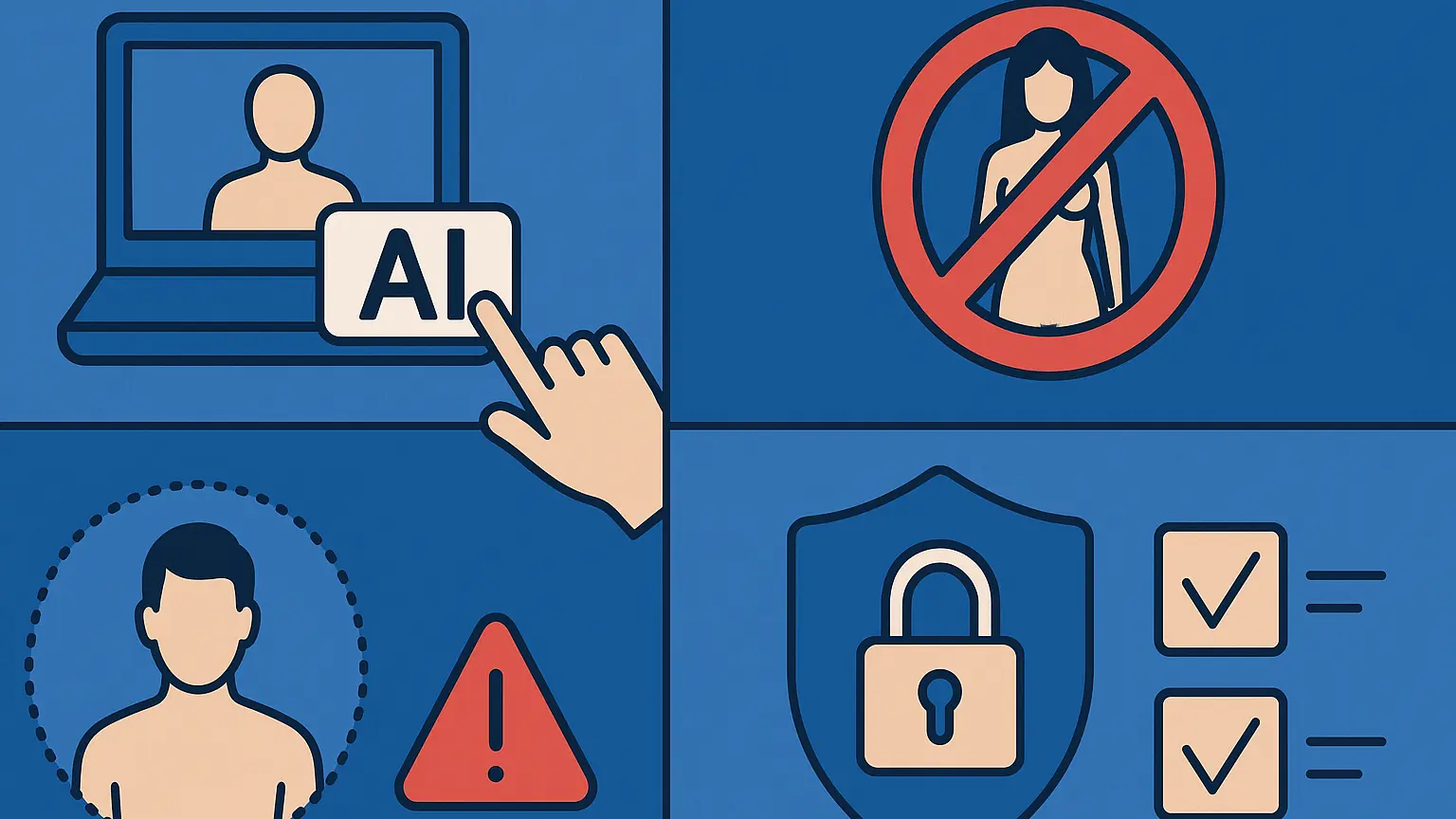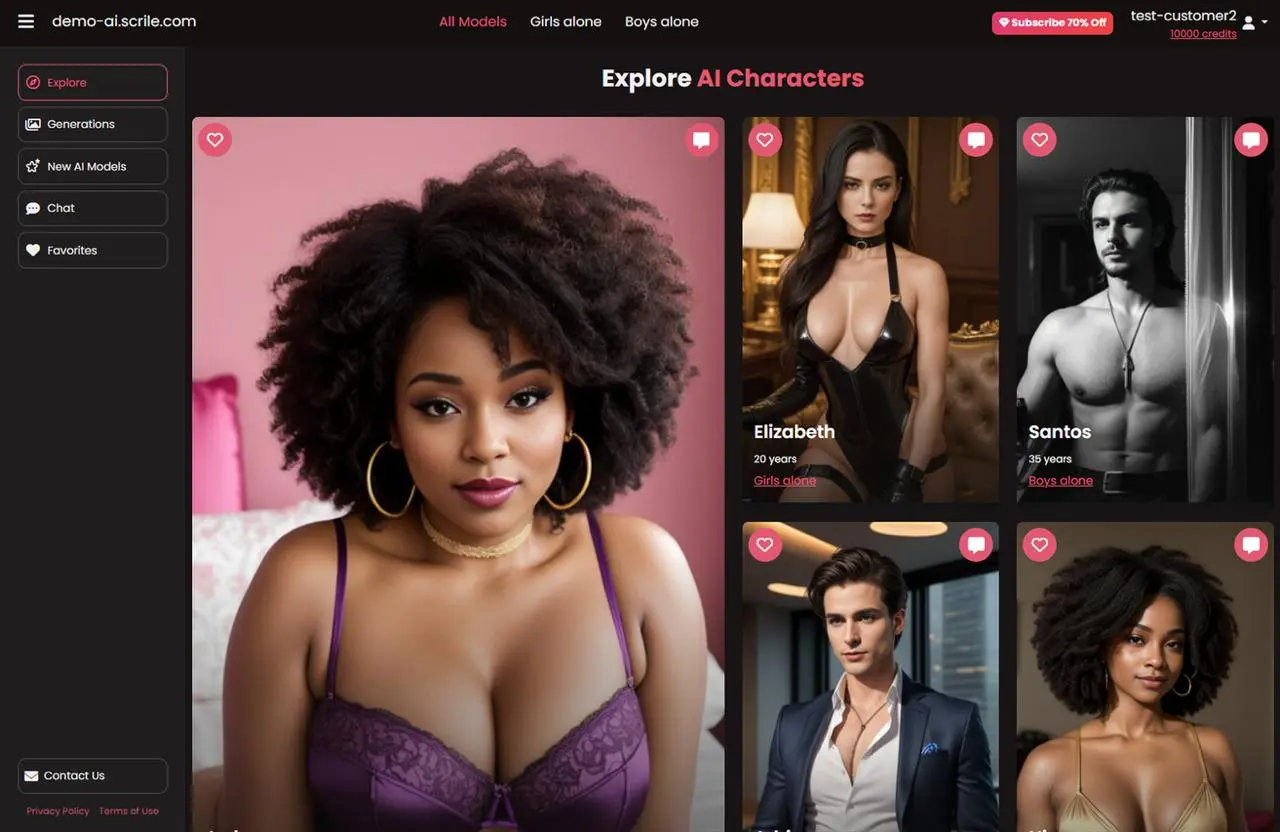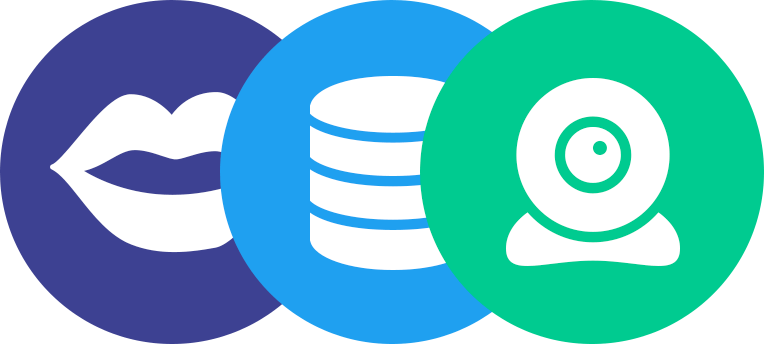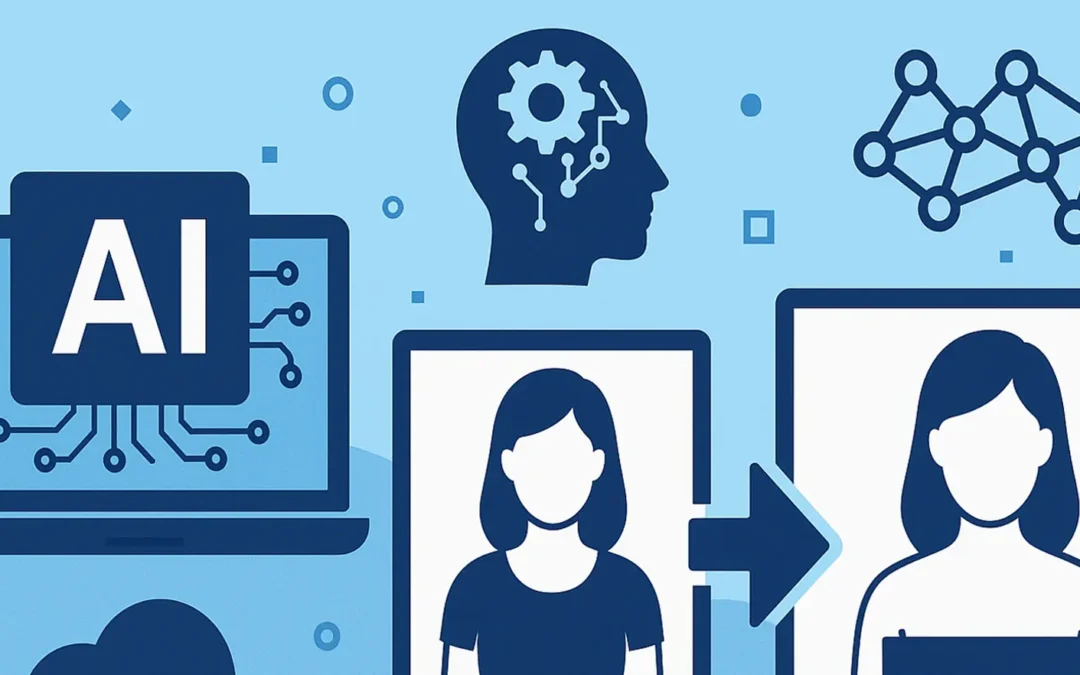You’ve probably seen or have been searching for tech blogs or trending topics anywhere recently and come across something like “nudify free” or “nudify AI free.” These phrases are everywhere—and often promising something for free. What is known, as they mean?
At the same time, not everyone who searches for “nudify free” is just looking for a shady curiosity. Many people reading this are founders, creators, studios, or product teams who are interested in the underlying technology and wonder:
“Is there a way to use similar AI for something legal, consent-based, and business-safe?”If that’s you, keep reading. This article will not only explain the risks around free nudify apps, but also show how to build your own ethical AI tools with full control over data, consent, and monetisation.
What Does “Nudify AI” Mean?
Simply put, “nudify AI” refers to technology that facilitates digitally nudifying a person’s image. For instance, these “nudify AI” applications work in exactly the same manner as face-swapping and photo restoration, only they are applied to nudity with none of the ramifications. Although there were individuals that offered up alternate ways of interpreting “nudify AI” that seemed to pose no potential harm and said it was “just technology” or “just curiosity in using the application,” they were very obviously outweighed by this discomfort.
Most free nudifying tools will request you upload a photo and let AI “reveal” what is hidden by clothing while using the same strategical methodologies as previously. This is how the AI model works. It’s a total fake, but the human senses are at a proximity to it to identify it as the concept of being nude, so this is where the victim types are at risk.
In short, nudify free sounds like a harmless tech exploration. But how far can we misuse AI when we remove the ethics? The following section will explore why free versions of these apps are not just unsafe but dangerous.
Nudify AI Tools and Their Risks

It may seem like a good idea to try out free nudify apps. After all, who doesn’t want free technology that is “amazing”? However, the “free” claims come with a lot of fine print—and even more risk. Most of the AI nudify free options are selling you instant realistic results. They pop up randomly across websites, Telegram groups, and even the app marketplace with flashy thumbnails and promises: “Upload your image—get results in an instant.” They never explain to you what happens to the photo after you take it off your device or who ends up seeing it.
If you work on products, not just personal experiments:
For companies, creators, and studios, “nudify free” tools are more than a privacy risk — they’re a compliance and reputation nightmare. Using black-box websites with unknown data practices can expose you to leaks, legal claims, and long-term brand damage.If you want to explore AI image technologies seriously, the only sustainable path is to work with controlled, auditable, and consent-based solutions, not random free services you found in a Telegram thread.
The Hidden Price of “Free”

In the technology sector, there’s an adage: if you aren’t paying for the product, then you are the product. Nowhere is this more relevant than here. These apps typically ask you to upload personal images without any disclosure about how the images are stored or used. Oftentimes, these platforms collect and sell user data—not just the images but also the metadata, including IP address, browser fingerprint, and device ID.
Some free nudify AI services even have spyware or adware embedded in the websites. A few of the clone versions have been known to redirect users to adult content networks, phishing sites, or fake subscription pages that would charge fees unknown to the user. Long story short, you may get a lot more than what you bargained for—and not in a good way.
How to Spot Unsafe Tools
There are certainly AI photo editing sites out there that are not bad, but it is important to know what not to trust when using one.
- No privacy policy or information about who owns the tool.
- Pop-ups asking for you to “upload now” in an immediate fashion.
- Enthusiasm—though you may leave the site with “100% real results” or “AI guaranteed undress,” for example, those are all red flags.
- Hidden paywall.
In sum, you aren’t just risking your privacy with AI nudify free apps; you are complicit in a service that is making money off of unethical practices. A free application is not ethical, but for a frame you can make a video. It may seem fun to use in the moment, though its long-term implications can end up being harmful to your psyche and our social world.
Legal Restrictions Around “Nudify AI”

In the past two years, there has been a dramatic reconfiguration of the legal landscape about nudify AI apps. What was nonexistent or gray has now unequivocally moved into the legal purview of lawmakers, technology companies, and human rights defenders in various parts of the world. If you ever thought that using content created within Nudify AI free tools was “just a joke,” the law is becoming less inclined to adjudicate that way.
For individuals, a bad decision with a “nudify free” site can ruin trust or even relationships. For businesses, the stakes are even higher: regulatory fines, lawsuits over non-consensual imagery, loss of investor confidence, and permanent damage to your brand.
That’s why any serious use of similar AI technologies has to run on controlled, compliant infrastructure — with clear consent flows, logging, and governance — not on anonymous sites that could disappear tomorrow.
From Grey Zone to Criminal Offense
Until recently, there have been few explicit laws restricting and regulating synthetic or AI-generated nudity in many parts of the world. Technology has simply been able to outpace the ability for law to regulate or sanction. However, once real people began to come forward and identified as victims, the posture of the government to regulate the production and distribution of synthetic nudity changed.
In 2024 and 2025, nations like Canada and Australia implemented new laws to limit AI-generated nudity or intimate behavior. For example, the European Union AI Act delineated high-risk uses of AI defined by “nudification or a deep fake used without their consent.” In specific states within the US, states like California, Texas, and Virginia propose to either introduce, modify, or expand “digital sexual abuse” laws that restrict inappropriate generation of a nude image of someone without their permission, including distribution and usage.
How Platforms Are Enforcing Rules

Tech companies are jumping in on the act without waiting for lawmakers. Meta, Google, and Reddit continued to update their community guidelines this month to reexamine definitions around “nudify” apps and the boundaries of public privacy. App stores are rejecting all apps that allow users to suggest someone wear less clothing, place someone in a video in a sexualized behavior, or alter someone’s body towards realism. In the mid-2025 span, Meta established its own task force focused on catching and reporting the use of “AI nudify” across Facebook, Instagram, and Threads. Once an image is considered “nudified,” the material that a group collects is endorsed for removal across the offending platforms.
In some cases, if a user or creator is “nudified,” Meta may suspend their account or refer it to law enforcement or remove any illegal content. In addition to the general sense of criminality, increasing and apparent law enforcement actions make it abundantly clear that the nudify free applications and nudifying-like users are operating in a legally dangerous environment.
The Legal-Ethical Connection
Just because the law is not enforced does not make it right. Legality doesn’t equal morality. Dabbling with free nudify AI tools erodes trust and promotes a culture of digital exploitation. The key here is consent, and consent should drive all kinds of AI innovation. Just because something can be done with the technology does not mean it should be done.
As AI evolves from a novelty to practical tools for the use of these powerful technologies, the focus is now on what are responsible tools that will responsibly use these powerful technologies. So, how can we innovate thoughtfully? In the next section of this blog, we will present safer, ethical AI alternatives that are designed to create and add value to productivity—not harm.
Safe Alternatives and Customization With AI

Let’s be honest—AI itself is not the bad guy. It’s how we apply it. The same technology that powers those nasty free nudify AIs also powers great, agreeably ethical creative applications. It centers upon intent, consent, and transparency.
When AI is built responsibly, it can help businesses, creators, and developers build beautiful, useful, and sometimes even life-changing tools. The key is to avoid exploitative use cases and instead simply push the boundary of exploration, not the boundaries of ethical privacy.
Note for founders, creators, and product teams:
If you’re exploring AI for your business — whether it’s virtual try-on, safer adult content tools with consent, content moderation, or creative automation — you need more than a cool demo. You need a platform where you control how models behave, how data is stored, and how users give (and revoke) consent.That’s why many teams are moving away from random “nudify free” sites and towards custom, white-label AI solutions that can be audited, branded, and integrated into existing workflows.
AI for Creativity, Not Exploitation
AI can do a lot more than just generate horrible or inappropriate content. Think of AI that drives photo-editing functions that might improve a person’s portrait, AI that designs visuals for brands, or AI that helps influencers create consistent visual content across a variety of platforms. These are just a few indications of ways to use the same algorithms used in “nudify” tools toward a more positive and legal outcome.
For example, AI can:
- Remove backgrounds and adjust lighting to improve a person’s photo.
- Generate additional creative visual effects or content for marketing purposes.
- Assist brands or businesses in automating tedious design tasks.
- Help personalize content as part of a brand story and visual activity.
These are all honest and transparent applications, all because users would willingly participate. Consent is part of the foundation, not an afterthought.
How to Identify Responsible AI Tools
Given the rise of AI products on the general market, it is increasingly important to understand which products may be safe and which are inappropriate. This guide aims to help you with:
- Clear data policies. A trustworthy platform tells you how your data is processed, stored, and deleted.
- User control. You should always have the right to delete your data or revoke consent.
- Moderation filters. Ethical AI tools prevent the generation of explicit or harmful content by default.
- Transparency. The company behind the AI should be public and reachable — not hiding behind anonymous domains.
- Legal compliance. Check if the product follows GDPR, CCPA, or similar privacy standards.
These propositions should not only protect your users but also protect your reputation as a creator or entrepreneur.
So, where do we find AI tools that support these values, tools that promote innovation, customization, and ethical design? Scrile AI supports the ethical stance and can assist in these areas. It is a platform that is designed to avoid exploitation. Scrile AI is designed for responsible creators, developers, and companies.
Now to consider if Scrile AI will be a smart, secure, and customizable alternative to some of the nudify free apps in the market.
Scrile AI: Legal and Ethical AI Solutions

In an overcrowded landscape filled with shady tools like free AI nudify apps, it’s hard to find an AI platform that is powerful and safe enough to trust with real projects. That’s where Scrile AI comes in — a fully customisable, ethical AI platform built for creators, businesses, and developers who care about doing things the right way.
Scrile AI is not “yet another undress app.” It’s an AI integration platform that lets you design, configure, and deploy your own AI-powered experiences on top of secure, compliant infrastructure.
Whether you are:
a fashion-tech brand prototyping virtual try-on and body-shape estimation,
a creator platform building consent-based NSFW tools where models control their own content,
a media or gaming company generating realistic avatars and characters, or
a moderation / trust & safety team that needs smarter detection of sensitive imagery,
Scrile AI gives you the building blocks to turn these ideas into production-ready products.
While nudify platforms chase clicks and controversy and create engaging algorithms, Scrile AI is focused on what matters: innovation, consent, and control. It is user empowerment, not exploitation.
What Makes Scrile AI Different
Scrile AI isn’t just an average AI generator or photo manipulation app. It’s an AI integration platform built for businesses to create unique technologies built on secure, compliant AI. Most importantly, Scrile AI provides custom capabilities for content creators, entrepreneurs, or platform owners, without the ethical baggage.
With Scrile AI, you get:
Full customisation – define what your models can and cannot do, set safety filters, prompt rules, and output policies that match your brand and legal obligations.
Data ownership & governance – your training data and user content stay under your control, with clear retention, deletion, and audit trails.
Compliance-ready architecture – designed to be aligned with GDPR, CCPA, and other major privacy frameworks, so your lawyers and DPO can sleep at night.
White-label integration – embed AI features into your own platform and present them fully under your brand.
Scalability & support – infrastructure that can grow from MVP to enterprise, plus a team that helps you move from idea to live product.
If you’re ready to explore the right way to use artificial intelligence—one that respects privacy, encourages innovation, and stays ahead of regulations—now’s the time to act.
👉 Explore Scrile AI to learn how to integrate smart, ethical, and customizable AI tools into your business. Build something that reflects your values, not the dark side of technology.
Get a free demoExamples of Ethical Products You Can Build
Here are just a few examples of how the same underlying technology as “nudify AI” can be turned into legal, consent-based products:
A virtual fitting room that helps users understand how clothes fit their body type without ever storing sensitive photos long-term.
A consent-based adult platform where verified models can generate AI-enhanced content of themselves, with automatic watermarking and logging.
A content safety layer that detects, flags, and blurs sensitive or illegal imagery before it reaches public feeds.
A training simulator for medical or wellness education that uses synthetic bodies instead of real patient images.
Instead of fighting against AI, Scrile AI helps you channel it into products that regulators, users, and your legal team can actually support.
The Real Cost of “Free” Nudify AI Tools
For an individual, uploading one photo to a “nudify free” site can mean leaks, blackmail attempts, or long-term emotional harm.
For a company, the fallout can be much bigger:
data breaches and regulatory fines,
legal claims over non-consensual or mishandled imagery,
lost partnerships and investor trust,
years of reputational damage.
Compared to that, investing into a controlled, compliant AI solution is not a luxury — it’s risk management. With Scrile AI, you can explore advanced image and chat technologies without gambling with your users, your brand, or your future.

Polina Yan is a Technical Writer and Product Marketing Manager at Scrile, specializing in helping creators launch personalized content monetization platforms. With over five years of experience writing and promoting content for Scrile Connect and Modelnet.club, Polina covers topics such as content monetization, social media strategies, digital marketing, and online business in adult industry. Her work empowers online entrepreneurs and creators to navigate the digital world with confidence and achieve their goals.


